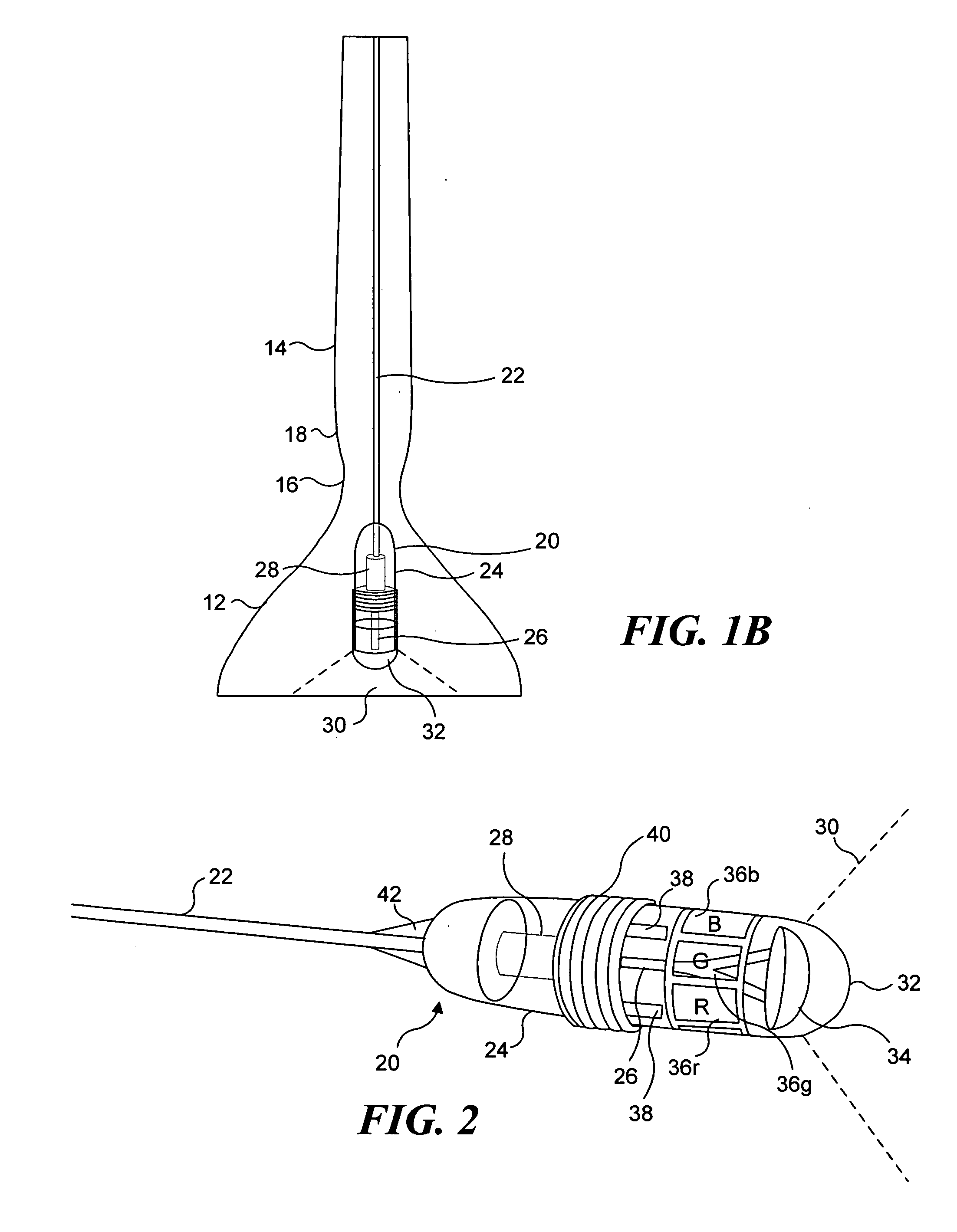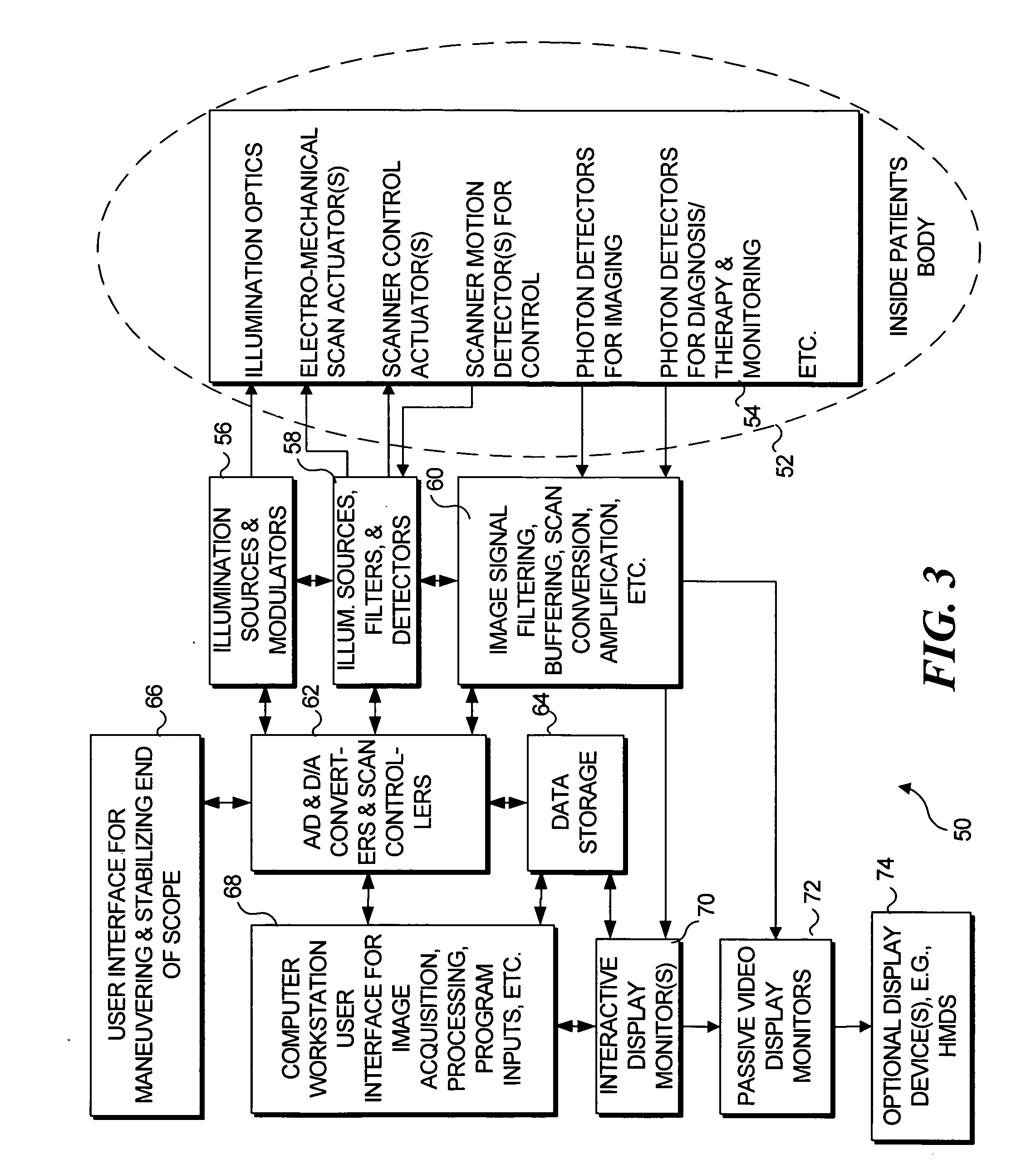Tethered capsule endoscope for Barrett's Esophagus screening
a technology of esophagus and endoscope, which is applied in the field of apparatus and a method for diagnostic imaging within the body lumen, can solve the problems of inability to control the rate at which the camera-capsule moves through the gastrointestinal tract, the resolution of the procedure is currently impractical, and the cost of the procedure is thus relatively high, so as to reduce the distortion of the image
- Summary
- Abstract
- Description
- Claims
- Application Information
AI Technical Summary
Benefits of technology
Problems solved by technology
Method used
Image
Examples
Embodiment Construction
Exemplary Application of Present Invention
[0053] Although the present invention was initially conceived as a solution for providing relatively low cost mass screening of the general population to detect Barrett's Esophagus without requiring interaction by a physician, it will be apparent that this invention is also generally applicable for use in scanning, diagnoses, rendering therapy, and monitoring the status of therapy thus delivered to an inner surface of almost any lumen in a patient's body. Accordingly, although the following discussion often emphasizes the application of the present invention in the detection of Barrett's Esophagus, it is intended that the scope of the invention not in any way be limited by this exemplary application of the invention.
[0054]FIG. 1A includes a schematic illustration 10 showing a stomach 12, an esophagus 14, and a lower esophageal sphincter (LES) 16. LES 16 normally acts as a one-way valve, opening to enable food swallowed down the esophagus ...
PUM
 Login to View More
Login to View More Abstract
Description
Claims
Application Information
 Login to View More
Login to View More - R&D
- Intellectual Property
- Life Sciences
- Materials
- Tech Scout
- Unparalleled Data Quality
- Higher Quality Content
- 60% Fewer Hallucinations
Browse by: Latest US Patents, China's latest patents, Technical Efficacy Thesaurus, Application Domain, Technology Topic, Popular Technical Reports.
© 2025 PatSnap. All rights reserved.Legal|Privacy policy|Modern Slavery Act Transparency Statement|Sitemap|About US| Contact US: help@patsnap.com



